Companion planting is an eco-friendly way to boost your harvest and improve the yard’s overall fertility. This article discovers the best companion plants for lettuce and, conversely, what’s not a great idea to plant nearby. Here are the top 11 lettuce companion plants.
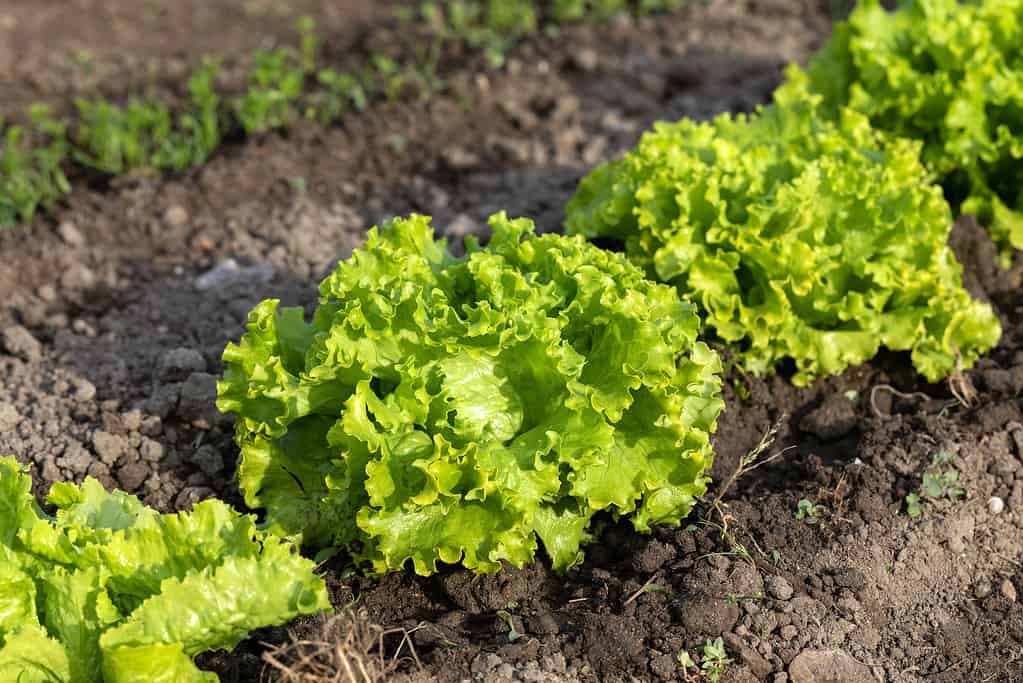
Beneficial plants grown alongside lettuce improves the harvest and local ecosystem.
©Thomas Pajot/iStock via Getty Images
Companion Planting: Quick Overview
Companion planting refers to the practice of growing beneficial plants nearby. Why? Here are five reasons why it’s a good idea.
Drought control
Certain plants provide shade either because they’re tall or because they can cope with hot conditions. They shade plants, such as lettuce, that wilt under hot sun. Some plants directly shade lettuce, whereas others shade the soil and prevent moisture burn-off.
Soil Strength
Plants with strong root systems lessen erosion and nutrient runoff by stabilizing soil structure. This means your crops have a better chance of pulling nutrients from the soil.
Soil Boost
Certain plants return nutrients to the soil as they grow. Beans, for example, fix nitrogen into depleted soil, which is what green leafy plants like lettuce need to grow well.
Pest control
Fruits and veggies we grow for our dinner table appear tasty to pests too! Companion planting uses scent to fend off aphids, slugs, and snails by directly repelling them or encouraging predatory insects such as ladybugs that eat aphids. This reduces the need for harmful pesticides.
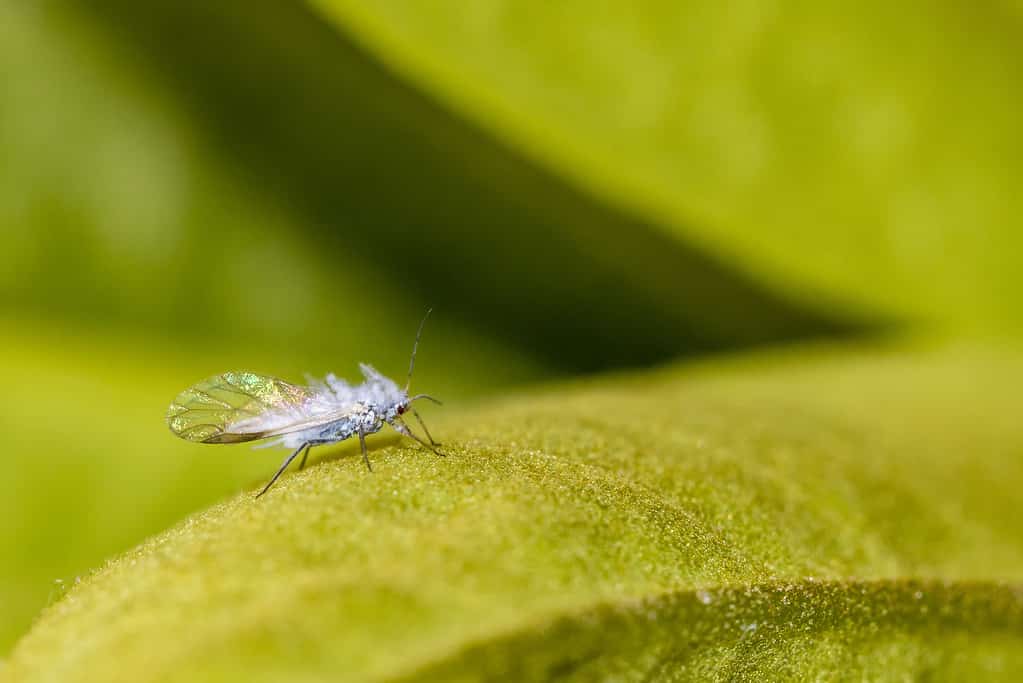
Companion planting helps ward off pests such as aphids.
©Ankor Light/Shutterstock.com
Better Pollination
Flowering blooms attract pollinators like bees and butterflies, and because many fruits and vegetables need pollination before they produce, it increases the likelihood of a good harvest.
So, that’s the reasons why you should give companion planting a go. Here are some of the top lettuce companion plants to try out.
1. Marigolds
Universal insect-repellent marigolds ward off insect pests that can’t stand their scent, but they also contain nematocidal, fungicidal, and antiviral properties that benefit lettuce.
Alongside their insect-repelling superpowers, marigolds produce beautiful high-color blooms that bring all the pollinators to your yard. Extra pollinators mean extra efficient pollination of your veggies and fruit plants.
Plant them in rows alongside lettuce or in a container near raised beds. Marigolds are drought tolerant but need regular water in hot spells to bloom well.
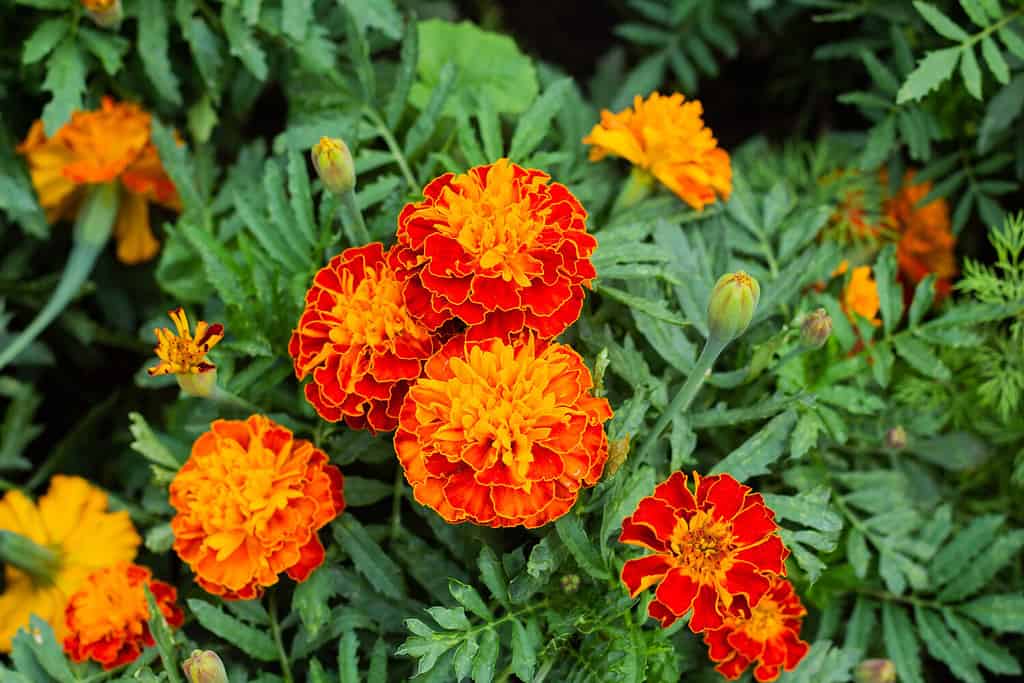
Marigolds repel aphids yet attract pollinators like bees and butterflies.
©FunFamilyRu/Shutterstock.com
2. Parsnips
Tasty root veggie parsnips not only provide roasting tin delights, but they also attract ladybugs that are ferocious predators of aphids and flying insect infestations.
They take some time to germinate and grow, so parsnips need to go into the ground first as soon as the soil warms up. One row of parsnips helps protect several crops of quick-growing lettuce plants.
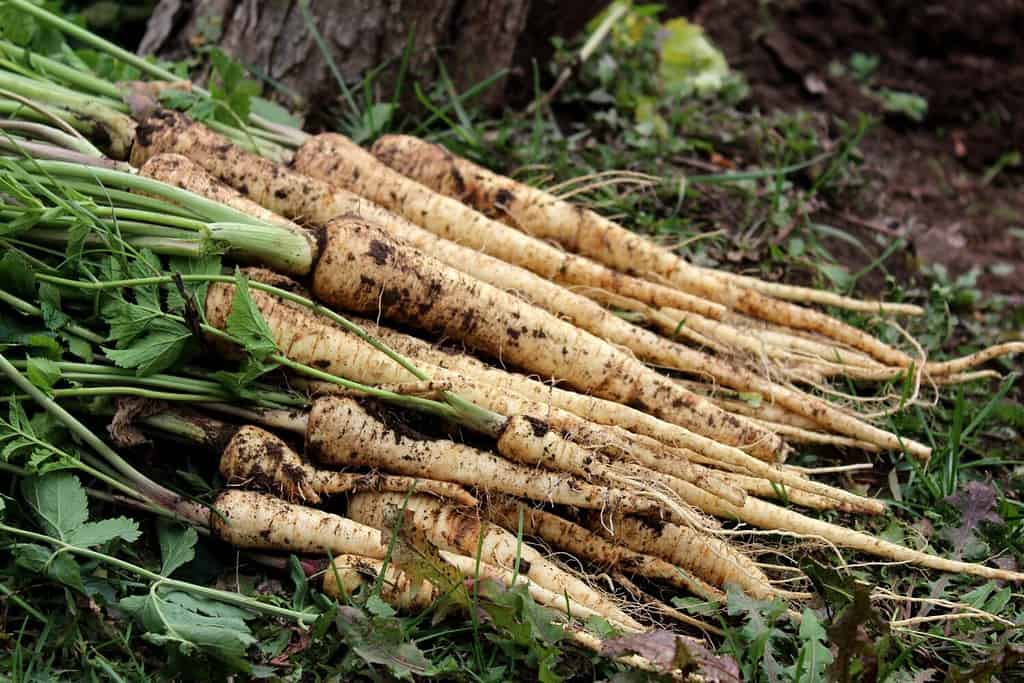
Parsnips’ long roots help aerate the soil and prevent waterlogging.
©Svetlana SG/Shutterstock.com
3. Peas
Tasty peas work wonders with lettuce.
Firstly, they grow trellis or pea stick supports and create shade for plants. Shade is important for lettuce, which easily burns under hot sun. Shade also traps moisture in the soil and prevents lettuce from drying out. If lettuce dries out, it produces seeds, and the leaves turn bitter.
Finally, peas are legume crops that add nitrogen to the soil. Lettuce needs lots of nitrogen to grow large healthy foliage.
Peas have shallow roots, so they grow well in lettuce-friendly containers as well as veggie beds. Just a few pea plants provide benefits. You don’t need a field.
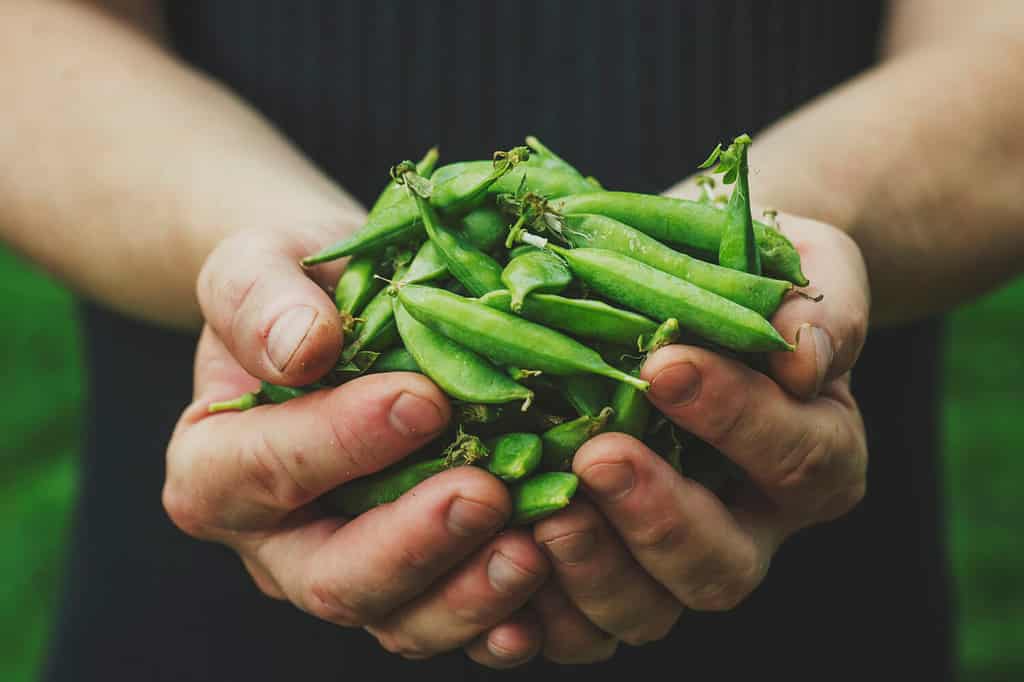
Companion pea plants offer shade and wind protection and fix nitrogen in the soil.
©Andrii Spy_k/Shutterstock.com
4. Onions
Onions’ main benefit is pretty obvious! It’s their strong scent.
Many pest insects and veggie bed-raiding animals, such as rabbits and deer don’t appreciate the allium scent. Their overpowering aroma is way too strong for super-sensitive noses.
Onions fit neatly between lettuce rows or interspersed in a raised bed. They don’t take up much room, and their shallow roots don’t interfere with lettuce root depth. Instead, their bulbous roots help break up earth clods and create essential aeration.

Onion scent is off-putting to flying pests and mammals like deer and rabbits.
©nnattalli/Shutterstock.com
5. Calendula
Calendula is commonly known as pot marigold. It’s not a true marigold, but it’s still a superstar companion plant for lettuce. However, it works differently.
Slugs and snails like calendula. They head to it and get stuck into dinner. By the time they’ve finished, there’s no room left for your leafy lettuce.
Plant calendula around lettuce as a protective barrier that traps slugs and snails. If you’re so inclined, you can gather the distracted gastropods during the evening.
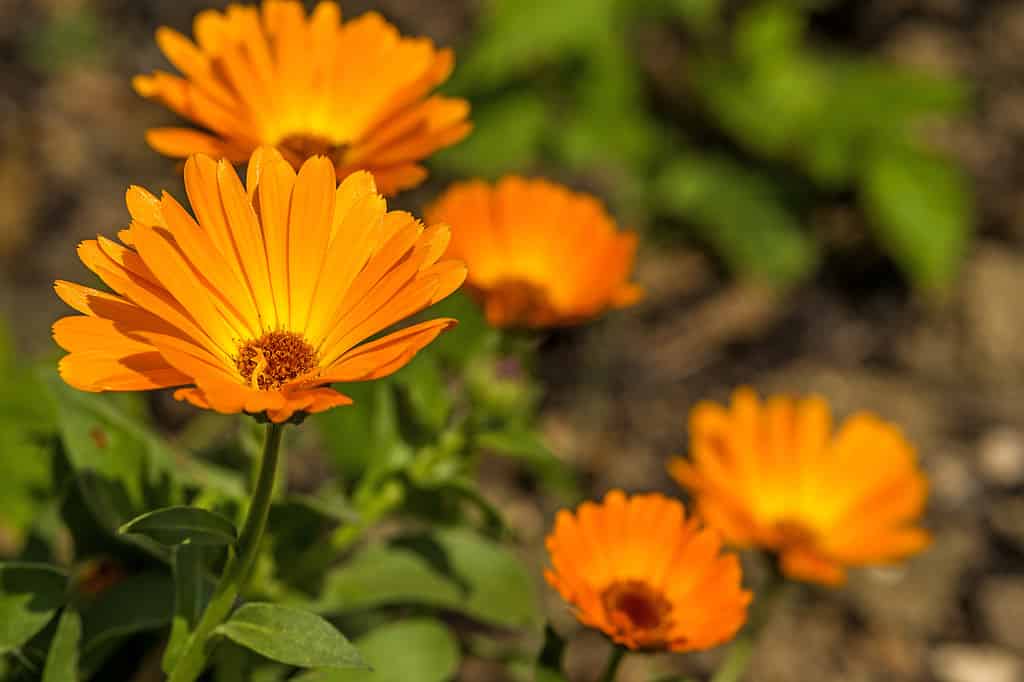
Calendula distracts slugs and snails from lettuce crops.
©iStock.com/HansJoachim
6. Carrots
Much like parsnips we’ve already discussed, carrots’ bulbous roots break up the soil, acting as an efficient eco-friendly aerator. This is good news for lettuce because soggy ground rots them pretty fast. Carrot aerators keep the ground moist but not waterlogged.
Plus, they’re pretty tasty, and if left to flower, carrots attract pollinators.

Carrot roots aerate the soil, which allows water absorption and a healthier harvest.
©iStock.com/hachiware
7. Strawberries
Sprawling strawberry plant foliage is an excellent shade-providing moisture trapper. They’re a good bet if you can’t fit taller plants near lettuce, but they need something to help conserve water by preventing evaporation. Their soil-covering habit also suppresses weed growth.
Strawberries need regular water and fertilizer in the growing months, and their small star-shaped flowers attract bees. Of course, the fruit is delicious too!

Strawberry foliage provides shade and prevents water evaporation amongst lettuce plants.
©4028mdk09 / CC BY-SA – License
8. Sweetcorn
Tall sweetcorn plants take up lots of room because their wind pollinated and planted in a square. Make the most of the room below them by planting up lettuce.
Sweetcorn plants provide shade, and their tough roots prevent soil erosion. They’re thirsty plants that suck up water, which prevents water-logging around lettuce plants. Because sweetcorn takes several months to ripen, you can harvest two to three lettuce crops beneath their canopy.
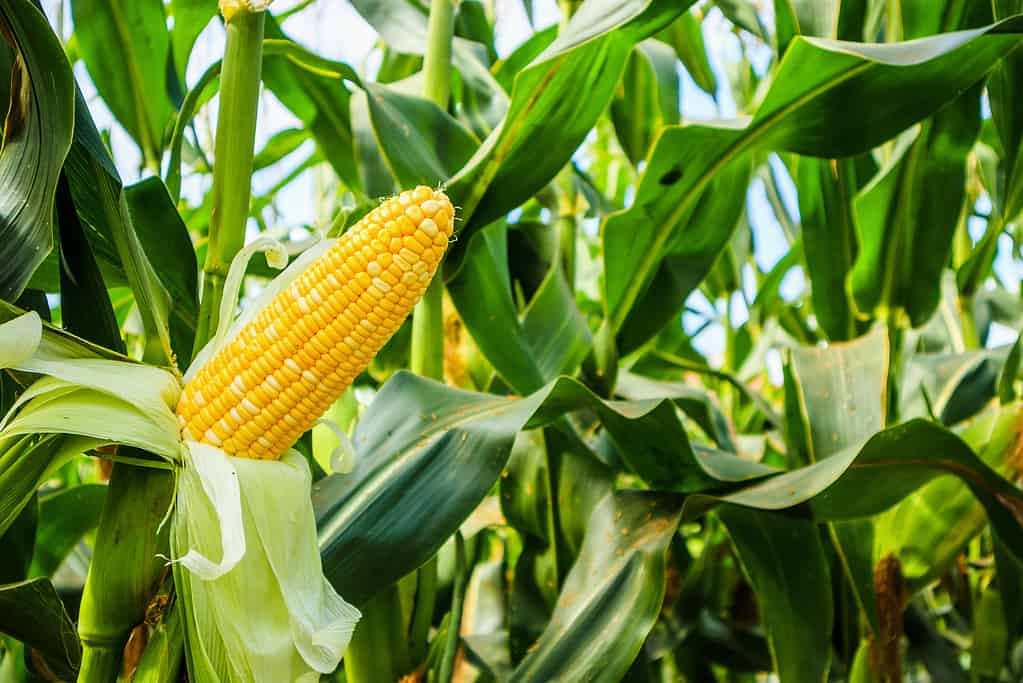
The space beneath the sweetcorn is excellent ground for lettuce.
©iStock.com/Kwangmoozaa
9. Basil
Aromatic herbs fend off insects, caterpillars, and many mammals, such as rabbits. Basil is a herb that loves sun and well-drained soil, so it’s not going to enjoy the same soil as your lettuce. The best way to grow basil near lettuce is in a well-drained container. Sweet basil is one of the best. It contains limonene, nerolidol, and saponins – a potent cocktail of bug-fighting chemicals.
Rub basil each time you pass to release its pungent scent and repel aphids. Of course, it’s excellent shredded on pasta and pizza dishes too.
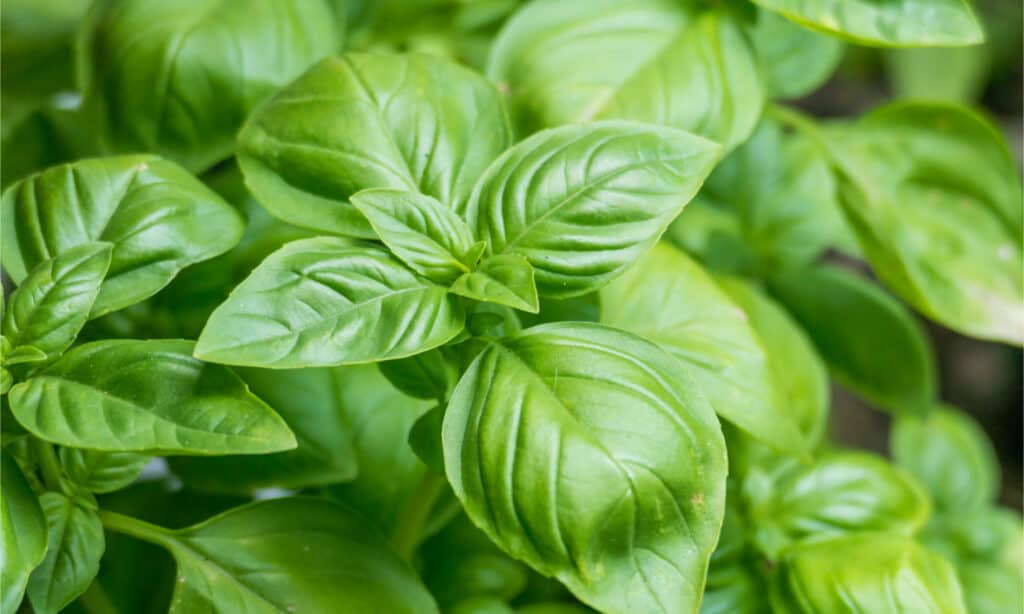
Basil is an excellent companion plant for lettuce because its scent deters bugs.
©David Jalda/Shutterstock.com
10. Catnip
Cats love it, but bugs do not.
Catnip is an excellent bug repellent near a lettuce garden because it attracts braconid wasps that parasite on certain insects.
It can grow to three feet tall, so it’s a shade provider, and during mid-summer, it produces beautiful pollinator-attracting purple flowers that last for months. More pollination equals a bigger harvest.
And finally, catnip attracts cats. This is good news if rabbits like to munch down on your hard-grown lettuce. One glance at your garden tiger and bunnies high tail it elsewhere.

Plant catnip with lettuce to deter aphids, attract bees, and provide shade.
©Anna Gratys/Shutterstock.com
11. Mint
Fresh mint has to be the most invigorating scent around, but it’s too strong for flying pests and veggie-eating mammal visitors. It’s a first-line deterrent for deer and rabbits that brush by and release that minty fresh scent into the air. In turn, this repels aphids and other flying pests.
Mint compounds include menthone, menthol, and pulegone, which also deter slugs, snails, and spider mites.
Just one word of advice, if you choose to use mint as a lettuce companion plant, do not plant it in the soil. Mint grows like wildfire via its roots, and you’ll never be rid of it. Instead, grow it in a container. If you prefer, sink the container into your soil, but don’t let the roots run riot.

Grow companion plant mint in a container because it has invasive roots.
©lpjp/Shutterstock.com
What Not to Plant With Lettuce
So, that’s 11 excellent lettuce companion plants to help grow a massive lettuce harvest, but there are a few plants that inhibit growth or actively stop lettuce from performing its best.
Lettuce does not like crops from the brassica family, such as broccoli, sprouts, kale, and cabbage. Many brassicas have compound-releasing roots that prevent lettuce seeds from germinating. This means no lettuce will grow nearby.
Another potentially bad choice is nasturtiums simply because they attract aphids. However, some gardeners use nasturtiums to distract aphids, and once they’ve landed on the pretty flowers, they use dish soap and washing-up gloves to crush and wash them away.
And finally, fennel. Fennel is a tasty bulb, and its foliage reaches lofty heights of over six feet, but it doesn’t play well with other vegetables, including lettuce. Fennels’ organic compounds inhibit growth and sometimes kill plants completely.
Who said gardening was a relaxing hobby? It’s a war zone out there!
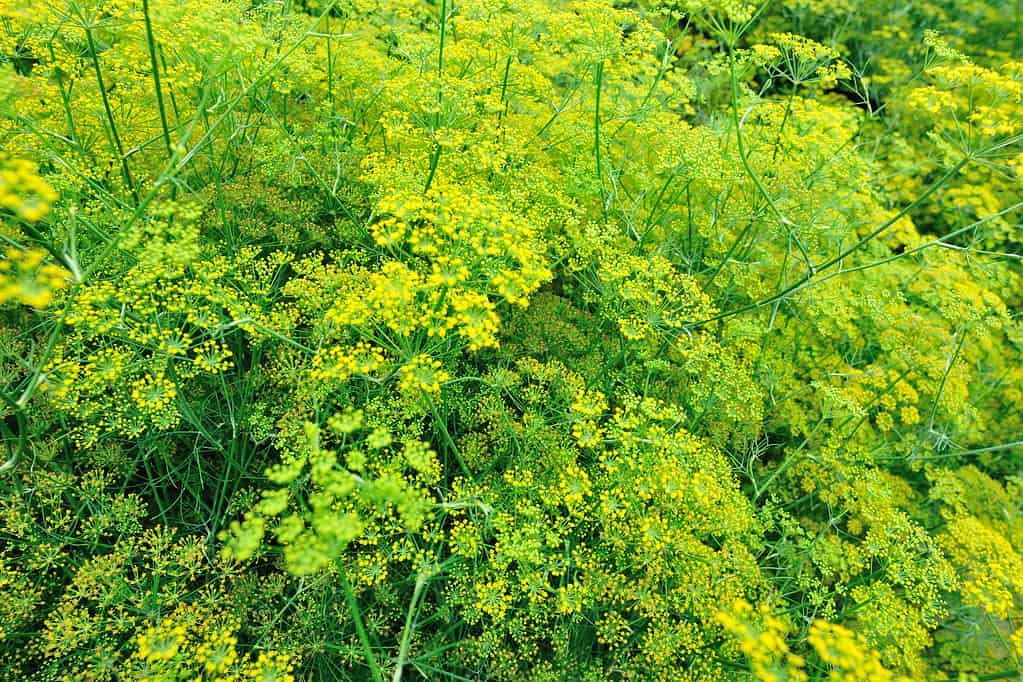
Fennel inhibits lettuce plant growth.
©lzf/Shutterstock.com
The photo featured at the top of this post is © lzf/Shutterstock.com
Thank you for reading! Have some feedback for us? Contact the AZ Animals editorial team.






